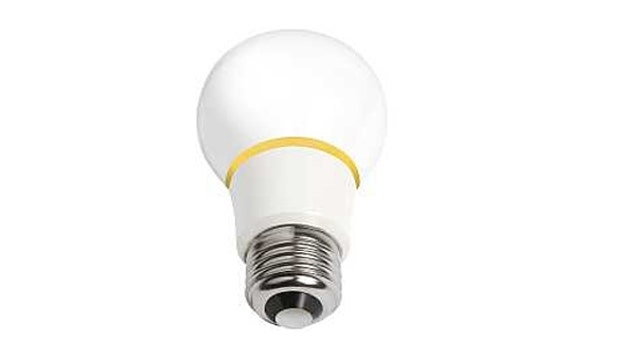Finally Light Bulb Company Looks to Steal the Limelight from LEDs
A new light-bulb startup is hoping to compete with LED- and CFL-makers when it comes to energy-efficient technology. At the start of 2014, regulations kicked in mandating the phase-out of traditional 40-watt and 60-watt incandescent bulbs. This has created a major opportunity for makers of energy-efficient bulbs, such as CFLs and LEDs, which can last for up to 10 and 20 years, respectively. And they aren't the only upstarts trying to cash in. Cambridge startup The Finally Light Bulb Company is now taking preorders for its “acandescent” bulb, which uses induction technology to mimic the warm glow incandescent fans love. “We replace that tungsten filament that you find in a typical incandescent light bulb with a piece of copper wire. And what happens is when you energize that piece of copper, it allows the bulbs to glow this warm, kind of welcoming light,” says Finally Light Bulb founder and CEO John Goscha. Goscha says this technology has been around for a long time, but it was challenging to make the parts small enough to use in household bulbs. He says the lights on the top of industrial cranes and skyscrapers –which are much larger than the bulb in your living-room lamp – often use induction technology, because they are long-lasting and energy-efficient. Goscha says other industries have helped pave the way for the Finally Light Bulb Company. “So we’ve actually benefited from the cell phone industry, and as components have gotten smaller and smaller and less expensive, it’s made what we’ve done actually possible,” says Goscha. Finally Light Bulb’s 60-watt equivalent is available online for pre-order for $9.99 – about the price of some of the low-cost LEDs available today. Goscha says the 60-watt equivalent is 75% more efficient than a 60-watt incandescent bulb and will last for 15 years. While Finally Light Bulb Company isn’t significantly outcompeting LED-makers on price, Goscha is hoping his product’s aesthetic benefits will make an impact on consumers. Aside from the color produced, which is intended to replicate the glow of the incandescent bulb, the Finally Light bulb also looks like a traditional bulb in terms of shape and size. “They love their incandescent and they want to save energy, so why not give them a bulb that looks and works just like their incandescent -- just without the energy waste,” says Goscha. Goscha says he’s been pleased so far with the response to the Finally Light bulb preorder campaign, with 30% of customers who visit the site placing an order. The company has raised $19 million in funding, and plans to introduce 75- and 100-watt bulbs this fall.




















